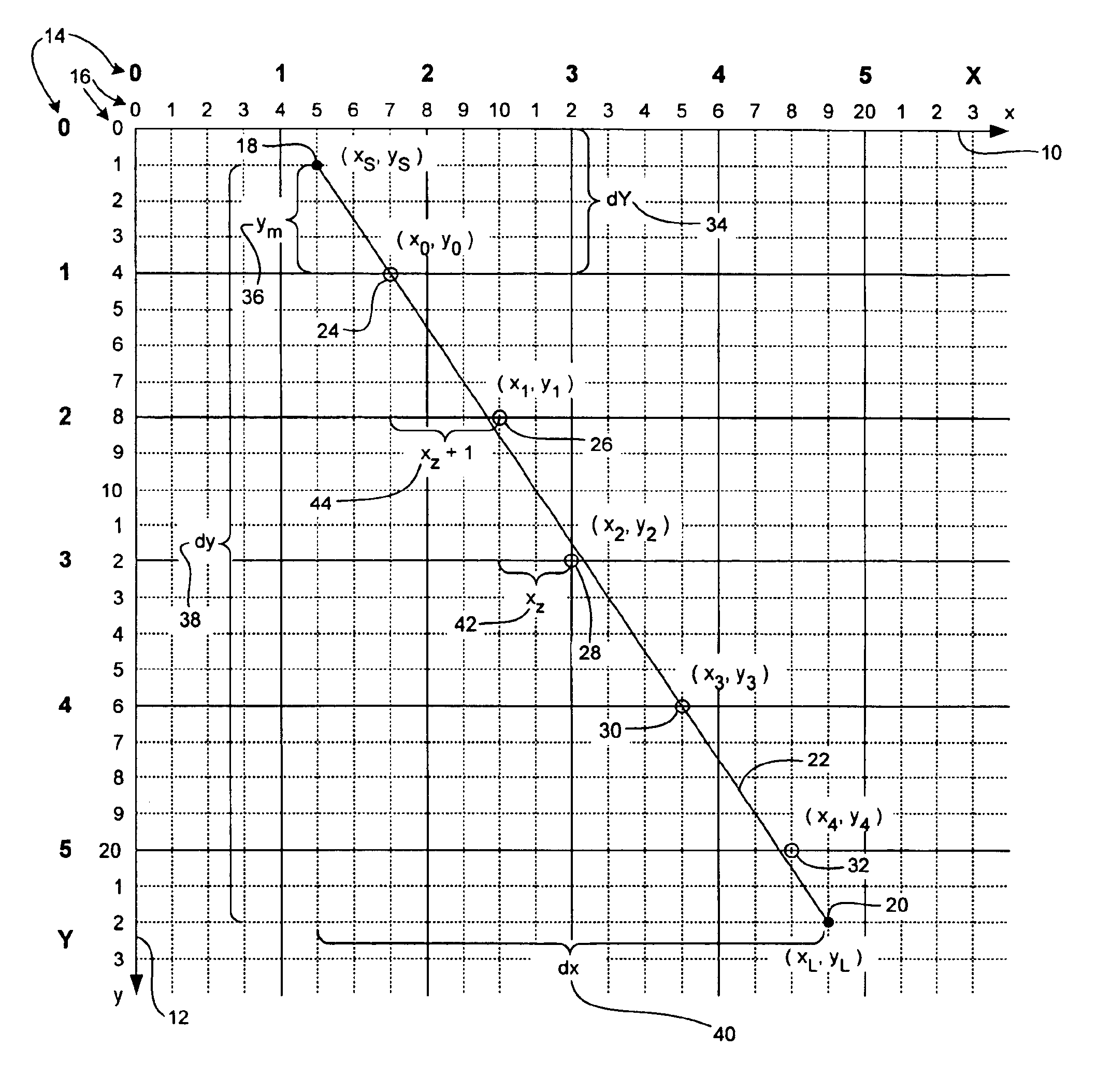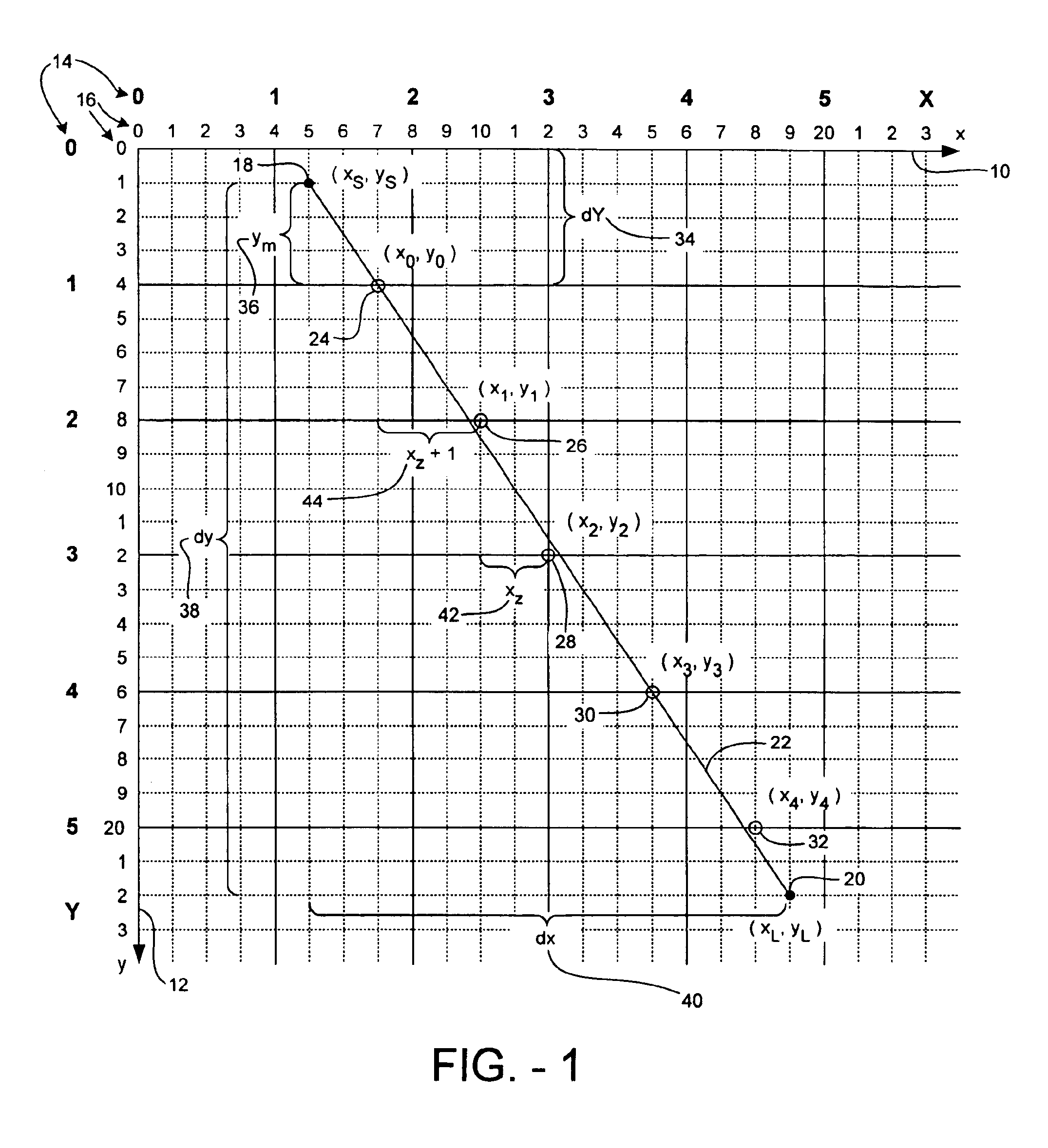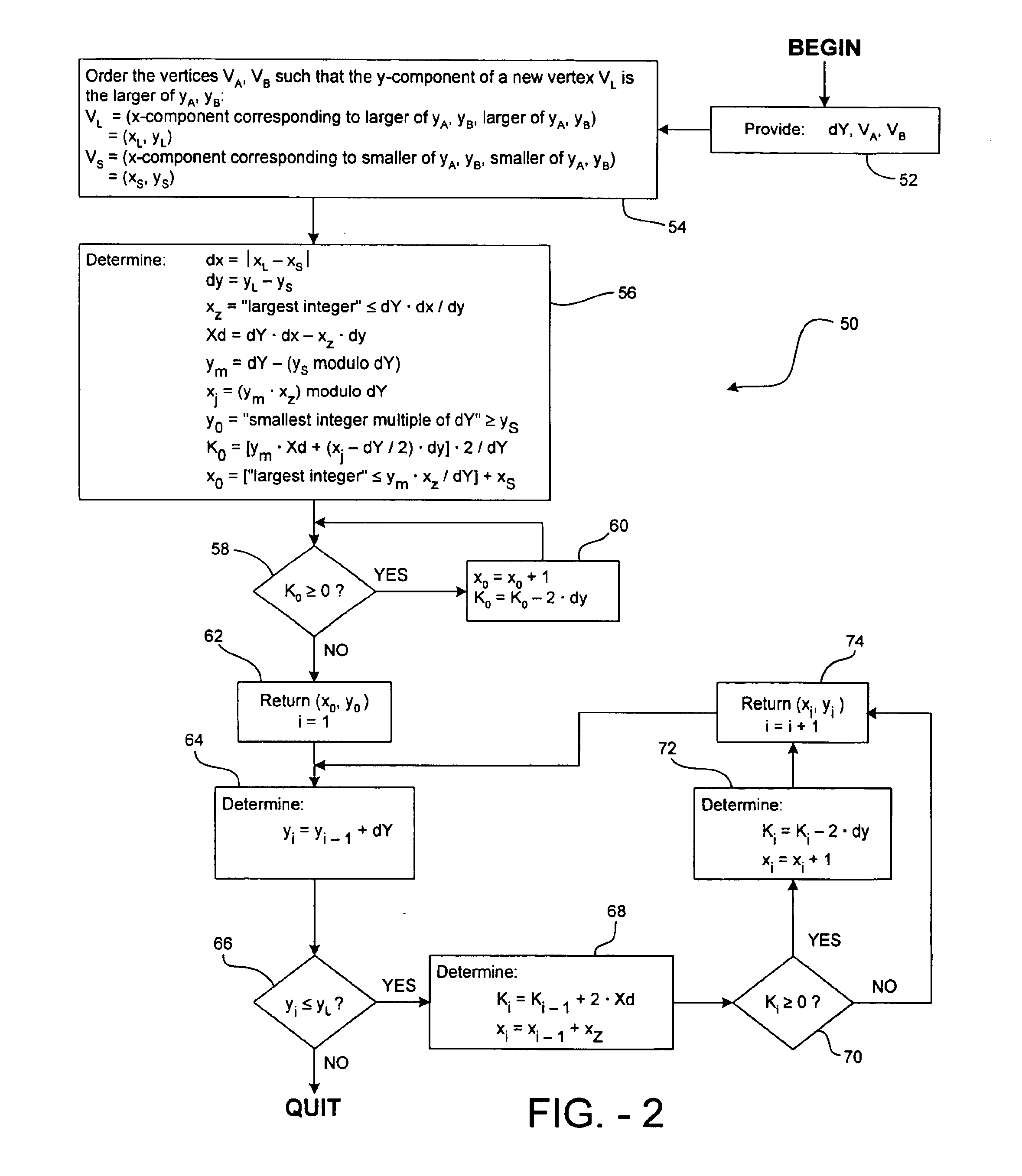Line scan-conversion methods
a line scan and conversion technology, applied in the field of information processing systems, can solve the problems of not allowing arbitrary precision and being considered too slow for advanced graphic applications, and achieve the effect of accurate scan conversion
- Summary
- Abstract
- Description
- Claims
- Application Information
AI Technical Summary
Benefits of technology
Problems solved by technology
Method used
Image
Examples
example
[0037]The line scan-conversion method illustrated in FIG. 2 will now be applied to the example shown in FIG. 1. The step numbers in the left-hand column correspond to the reference numerals used in FIG. 2. Consecutive numbering of each equation and assignment statement continues.
[0038]
BEGINStep 52(21)dY = 4(22)VA = (19, 22)(23)VB = (5,1)Step 54(24)VL = (19, 22)(25)VS = (5, 1)Step 56(26)dx = |xL − xS| = |19 − 5| = 14(27)dy = yL − yS = 22 − 1 = 21(28)xZ=“largest integer”≤dY·dx / dy=“largest integer”≤4·14 / 21=“largest integer”≤8 / 3=2 (29)Xd = dY · dx − xZ · dy = 4 · 14 − 2 · 21 = 56 − 42 = 14(30)ym = dY − (yS modulo dY) = 4 − (1 modulo 4) = 4 − 1 = 3(31)xj=(ym·xZ) modulo dY=(3·2) modulo 4=6 modulo 4=2 (32)y0=“smallest integer multiple of dY”≥yS=“smallest integer multiple of 4”≥1=4 (33)K0=[ym·Xd+(xj-dY / 2)·dy]·2 / dY=[3·14+(2-4 / 2)·21]·2 / 4=[42+(0)·21]·2 / 4=84 / 4=21 (34)x0=[“largest integer”≤ym·xZ / dY]+xS=[“largest integer”≤3·2 / 4]+5=[“largest integer”≤6 / 4]+5=...
PUM
 Login to View More
Login to View More Abstract
Description
Claims
Application Information
 Login to View More
Login to View More - R&D
- Intellectual Property
- Life Sciences
- Materials
- Tech Scout
- Unparalleled Data Quality
- Higher Quality Content
- 60% Fewer Hallucinations
Browse by: Latest US Patents, China's latest patents, Technical Efficacy Thesaurus, Application Domain, Technology Topic, Popular Technical Reports.
© 2025 PatSnap. All rights reserved.Legal|Privacy policy|Modern Slavery Act Transparency Statement|Sitemap|About US| Contact US: help@patsnap.com



